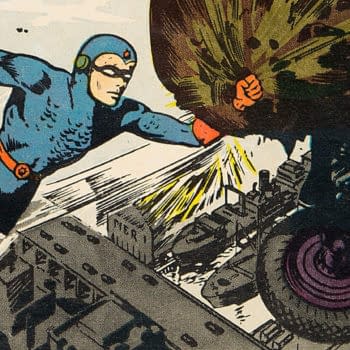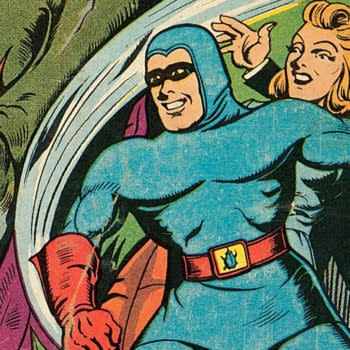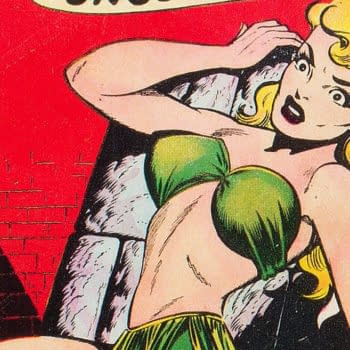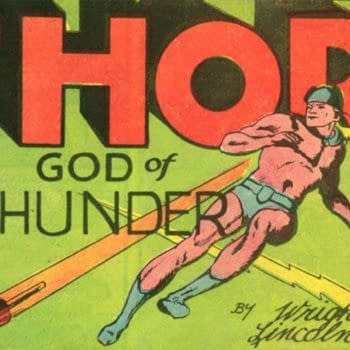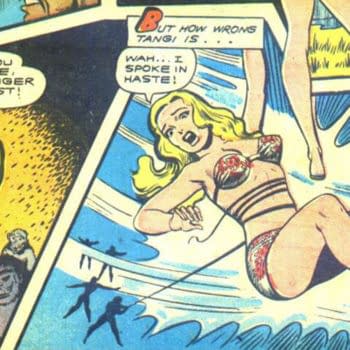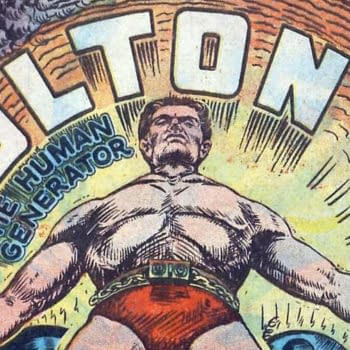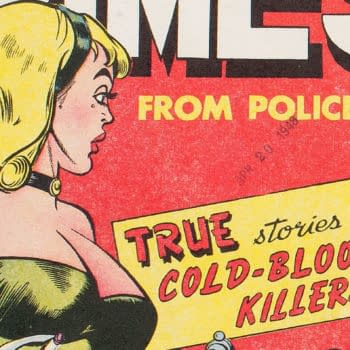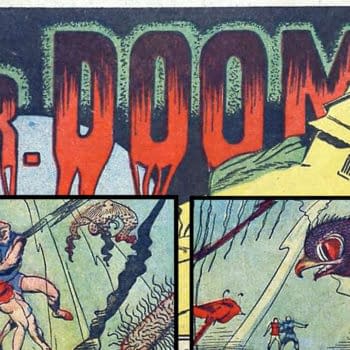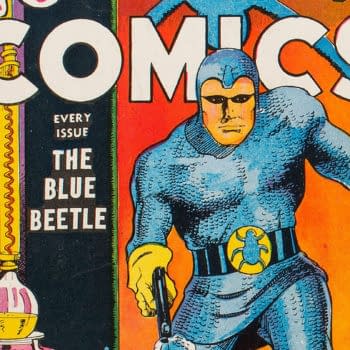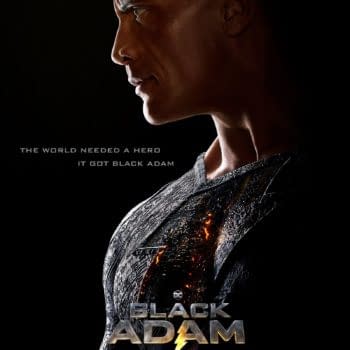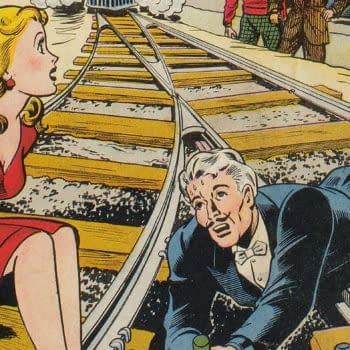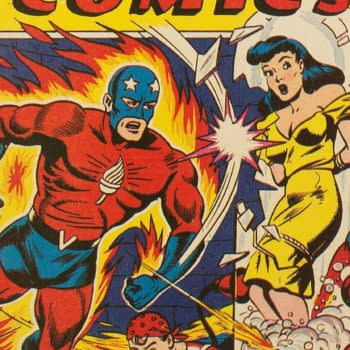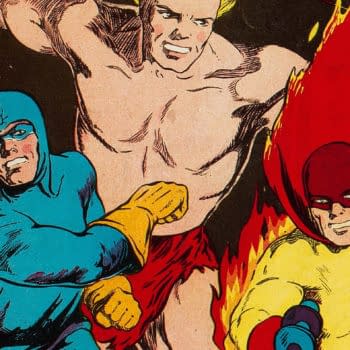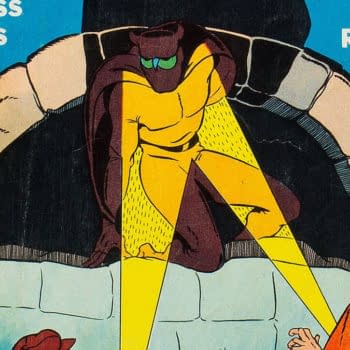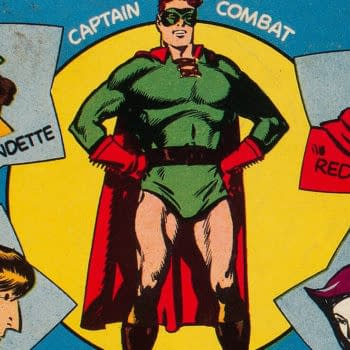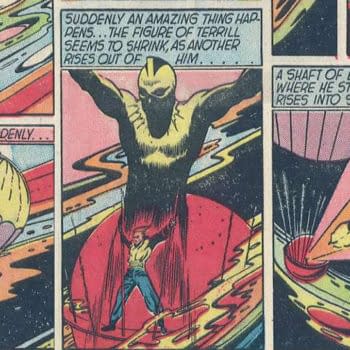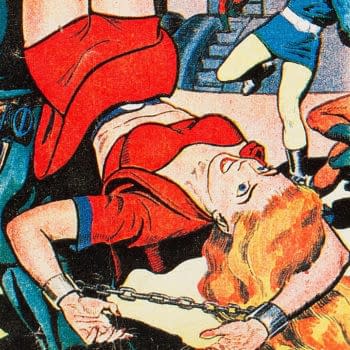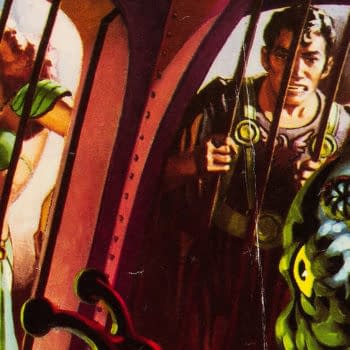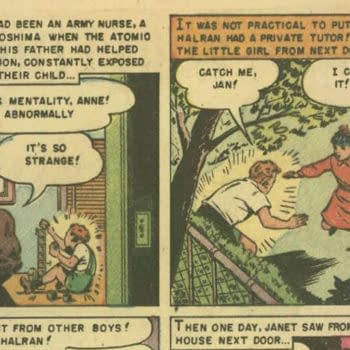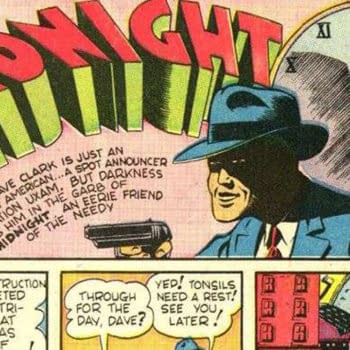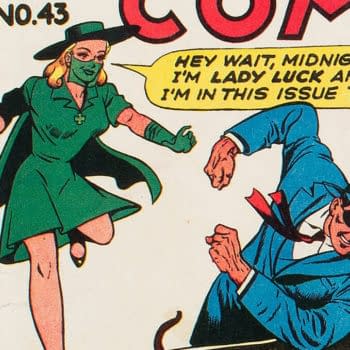The Blue Beetle story from issue #55 (1948) started life as something very different. It's a remix of a 1946 Atomic Comics story.
Mark Seifert Archives
Golden Age Blue Beetle #31-45 sees the character powering up dramatically and adventuring into science fiction and fantasy.
The first woman to be part of the Blackhawk team, the character in Military Comics #20 is widely regarded as the Golden Age Lady Blackhawk.
Fox Feature Syndicate's Women Outlaws #2 features legendary Frank and Jessie James associate, the infamous Belle Starr.
Best remembered for his work at EC Comics, Jack Kamen also did some stand-out art for Fox Feature Syndicate, including Rulah.
Thor, God of Thunder from Fox Feature Syndicate's Weird Comics was one of the most interesting comic book takes on the character.
Jack Kamen is best remembered for his science fiction, horror, and crime work for EC Comics, but he also did notable work for Fox Feature.
Crimes by Women #10 from Fox Feature Syndicate was the subject of discussion in Fredric Wertham's Seduction of the Innocent.
There were a lot of strange superheroes created during the Golden Age, but Cyclone Comics' Volton might be in a class all his own.
During his 1948 war on comic books, Indianapolis Mayor Albert G. Feeney singled out a story that appeared in Famous Crimes #1.
The lead feature of Crimes by Women #2 tells the sordid true crime tale of serial killer Belle Gunness, nicknamed "Hell's Belle."
Victor Fox's important early Golden Age title Science Comics chronicles how Timely/Marvel beat him to the name Electro.
After his debut as a pulp-style man of mystery inside Mystery Men Comics #1, Blue Beetle got his cover debut on Mystery Men Comics #7.
Hawkman, Dr. Fate and Atom Smasher are all looking very good in the new Black Adam trailer, as we get a look at the origin as well.
Blackstone the Magician's comic book career took some fascinating twists and turns, and includes Shadow creator Walter Gibson.
After Victor Fox got into financial trouble, his printer Holyoke published the Blue Beetle #12-30, and those issues are a wild ride.
Marvely/Timely's the Human Torch was not the only Golden Age fire-based hero that legendary artist Alex Schomburg provided covers for.
Despite Victor Fox's ongoing legal and financial dramas, Fox Feature Syndicate put out some fascinating titles, and Big 3 is one of them.
The Owl's continuing superhero drama in Crackajack Funnies became unusually sophisticated by Golden Age standards.
The obscure character Rebo from "Saturn Against Earth" published in the U.S. in Future Comics was eventually used in Donald Duck adventures.
The incredibly obscure Star Studded Comics from Cambridge House Publishers features Ghost Woman plus work by Carmine Infantino.
The experimental "strato-balloon" voyage that gave the Ray his powers was inspired by real scientific experiments to study cosmic rays.
The publisher behind the elusive UK Planet Comics "Locker" series has several interesting publishing mysteries behind them.
The obscure Golden Age comic book series Camera Comics featured a character inspired by photojournalist Margaret Bourke-White.
Ziff-Davis comic book title Amazing Adventures had contributions by a number of legendary creators, and spectacular covers to match.
Including her debut in All-American Comics #89, Harlequin showed up nine times in 1947-1948, several of those in All-American Comics.
Published in 1964 by Civil Rights educators, Harlem Youth Report #5 was part of an effort to study the issues facing Harlem in the 1960s.
Inspired by the same Wilmar Shiras Children of the Atom stories that inspired X-Men, Strange Worlds #7 features a classic Marvel-style mutant
Inspired by both The Spirit and The Shadow, Jack Cole's Midnight debuted in Quality's Smash Comics #18 cover-dated January 1941.
Lady Luck's comic book cover debut by Reed Crandall on Quality's Smash Comics is surprisingly tough to come by in any condition.


